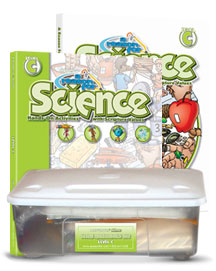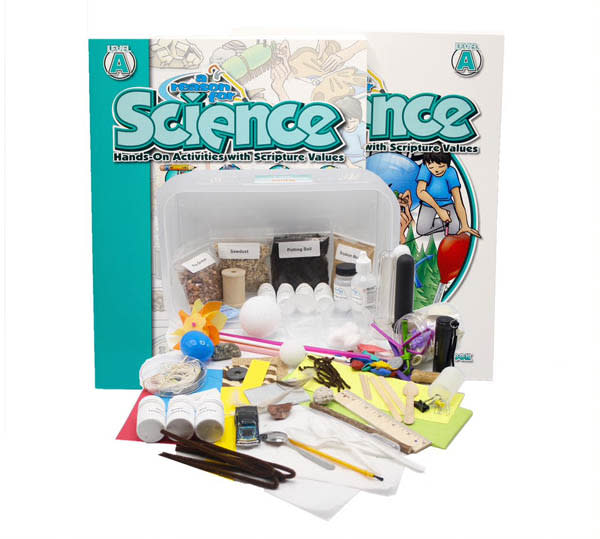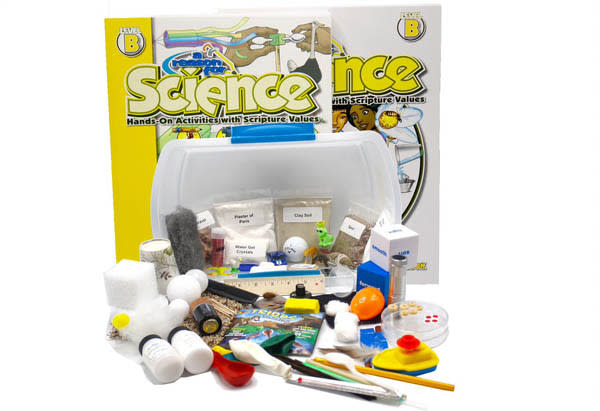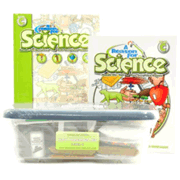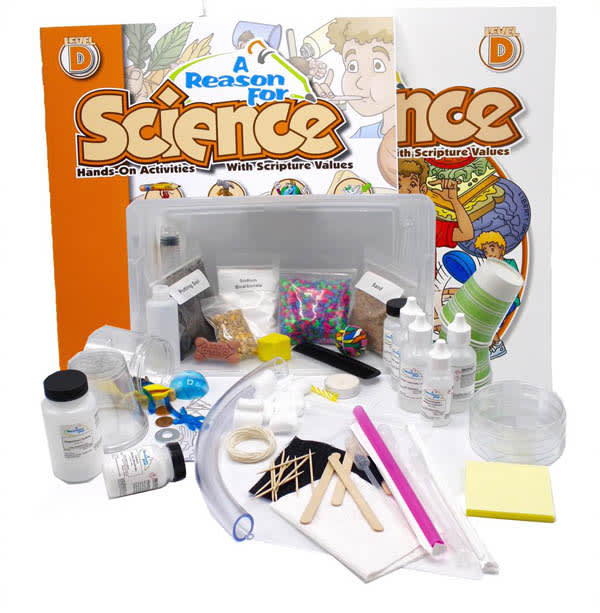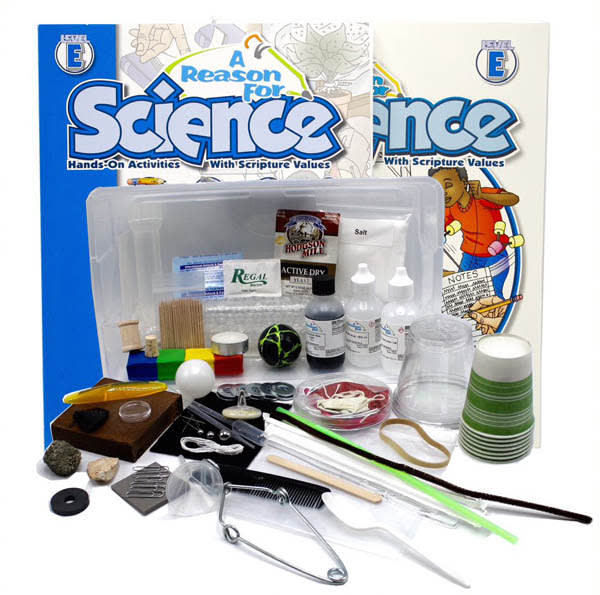The Concerned Group's A Reason for Science courses for grades 1 through 8 are likely to be a hit with homeschoolers for a number of reasons:
- activity-based lessons
- easy-to-use teacher manuals,
- enough variety within each lesson to suit all learning styles to some degree
- Christian perspective
- relatively easy to teach for a program that involves experiments and activities
- convenient packaging of books and activity materials in each set
Books A through H correspond to grades 1 through 8. Teacher guidebooks show how lessons correlate to the national science standards for those concerned about such things. Each book covers a mix of earth, life, and physical science topics. You need not necessarily use the book that corresponds to a student's grade level, although you should be choosing a level that each child can read and understand if you expect them to work on parts of the lessons independently.
This is an "inquiry" based program that engages children in the learning process through activities and experiments, followed by questions, discussion, and written activity. It stresses conceptual understanding rather than memorization of science information. For example, one objective of a lesson in the third-grade book is to explore the movement of blood in the human body. Students begin by learning how to take their pulse at rest and after exercise. After the activity, the teacher leads a discussion about the heart and blood movement. Students answer questions in their worktext that require an understanding of the discussion and activity results.
‘Extended Teaching" suggestions for this lesson offer additional ideas for those who might want to provide more activity or information. For example, the heart lesson suggests five other options among which are drawing and labeling a diagram of the heart's chambers and discussing the path blood takes as it enters and exits the heart, "challenge students to research things that can damage the heart….," and having students compare and contrast drawings of animal and human hearts.
This approach contrasts with most science programs that stress memorization of vocabulary and information, then use activities to illustrate or reinforce that information. In my opinion, this is a great approach for the elementary grades. However, some parents might want to shift toward more content as they reach seventh and eighth grade. Even if parents choose another science text for content, A Reason for Science would make a terrific lab course to use alongside that text. The trick would be correlating experiments to textbook topics.
A Reason for Science was originally written for classroom use. It assumes that children will work in cooperative groups on activities and that there will be adequate discussion within the classroom group. Because of this, in homeschool situations the curriculum will likely work best if you have two or more children participating in each lesson. Even though A Reason for Science has different levels for different grades, it would make the most sense to try to use a single level with some or all of your children if they are not spread too far apart—probably no more than two or three years apart. However, lessons easily adapt for use with only one child. .
There are a teacher guidebook and student worktext for each level. Both are essential. Detailed lesson plans in the teacher guidebooks make it easy for inexperienced parents/teachers to provide engaging lessons without a lot of research and effort. Lessons are designed to be taught from the teacher guidebook.
Student worktexts are a cross between a text and a lab book. While they provide key information with important vocabulary words in bold type, the amount of information is significantly less than in traditional texts. Instead of lots of information, student worktexts have detailed and illustrated instructions for activities plus questions and plenty of space for observations and analysis. Students write directly into their worktexts. Questions often require lengthy written answers that require higher-level thinking and analysis.
Since activities are the heart of instruction, an activity kit comes with each set of books. This is a plastic box with almost everything you'll need for the activities. Items missing from the kit are common classroom supplies like scissors, pencils, paper, or bulky, but easy-to-get items like empty soda bottles. Each kit actually has enough materials and supplies for three to five students. (Remember these were originally designed for classroom use.)
Reproducible weekly student assessments are in the teacher guidebook for each level along with their answer keys. There are no cumulative assessments, so you might want to create those for yourself if you feel the need to test how much students have retained over a semester or school year.
While Christian values underlie the entire series, specific Christian content is compartmentalized into Scripture-based object lessons called "Food for Thought" at the end of each lesson You can use these or not. Regarding the topic of Creation, A Reason for Science takes neither a young-earth nor an old earth position, leaving it to teachers and parents to discuss topics beyond the basic concept of God as Creator.
Each level has 36 lessons. Because written activities and discussions are so closely linked to the activities, I would recommend once-a-week science lessons that might last an hour or more rather than spreading each lesson over a few days.




